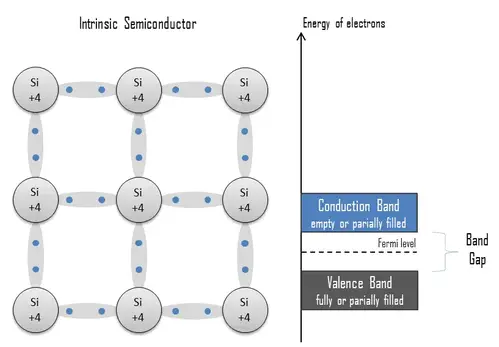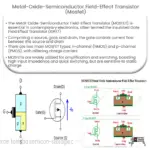Explore the world of CMOS transistors: their structure, working principle, applications, advantages, and challenges in modern electronics.
![]()
Introduction to CMOS Transistors
The world of electronics and digital computing relies heavily on an integral component known as a transistor. Among the many types of transistors, the Complementary Metal-Oxide-Semiconductor (CMOS) transistor holds a unique and significant place. This article delves into the structure, working principle, and applications of the CMOS transistor.
Structure of a CMOS Transistor
A CMOS transistor consists of two types of transistors: n-type (NMOS) and p-type (PMOS). The NMOS transistor comprises n-type source and drain regions in a p-type substrate, while the PMOS transistor includes p-type source and drain regions in an n-type substrate. Both transistors are separated by a thin layer of silicon dioxide or a similar insulator, forming a ‘gate’.
Working Principle of CMOS Transistors
The operation of a CMOS transistor is based on the use of an electric field to control the conductivity of its channels. When a voltage is applied to the gate of an NMOS transistor, it forms a conductive channel in the p-type substrate between the source and the drain, enabling current flow. The opposite is true for a PMOS transistor, where a voltage applied to the gate inhibits current flow.
- ON State: When a high voltage is applied to the gate in an NMOS transistor (or low voltage for a PMOS transistor), the transistor is in the ‘ON’ state, allowing current to flow between the source and drain.
- OFF State: Conversely, when a low voltage is applied to the gate in an NMOS transistor (or high voltage for a PMOS transistor), the transistor is in the ‘OFF’ state, preventing current flow.
Applications of CMOS Transistors
CMOS transistors are the backbone of modern digital electronics. Their low power consumption, high noise immunity, and large noise margins make them ideal for various applications:
- Digital Logic Circuits: CMOS transistors are commonly used in digital logic circuits, such as AND, OR, NOT, and XOR gates, which are fundamental building blocks of digital systems.
- Memory Chips: CMOS technology is extensively used in memory chips like RAM, ROM, and flash memory due to its ability to store and process digital data effectively.
Further Applications of CMOS Transistors
- Microprocessors: The low power consumption and high-speed operation of CMOS transistors make them ideal for use in microprocessors, the brains of computers and many other digital devices.
- Imaging Sensors: In the field of imaging, CMOS technology is used to make image sensors for digital cameras. The sensors convert light into electrons, which can then be processed to produce a digital image.
Advantages of CMOS Transistors
CMOS transistors have several advantages that contribute to their widespread use:
- Low Power Consumption: CMOS transistors only consume power during the charging and discharging of capacitors, leading to significantly lower power consumption compared to other types of transistors.
- High Noise Immunity: Due to their complementary configuration, CMOS transistors provide high noise immunity, reducing the risk of incorrect signals in digital circuits.
- High Density: Due to their small size, a large number of CMOS transistors can be packed onto a single chip, increasing the computational power of the device.
Challenges and Limitations
Despite their advantages, CMOS transistors face some limitations:
- Leakage Current: As CMOS technology scales down, leakage current becomes a significant issue, leading to increased power consumption.
- Short Channel Effects: As transistors become smaller, short channel effects such as drain-induced barrier lowering and velocity saturation become increasingly problematic, affecting the transistor’s performance.
Conclusion
In conclusion, CMOS transistors are an indispensable component of modern electronics due to their low power consumption, high noise immunity, and high density. They are the building blocks of digital logic circuits, memory chips, microprocessors, and imaging sensors. Despite certain limitations, ongoing research and advancements continue to improve CMOS technology, ensuring its relevance and utility in our increasingly digital world.



